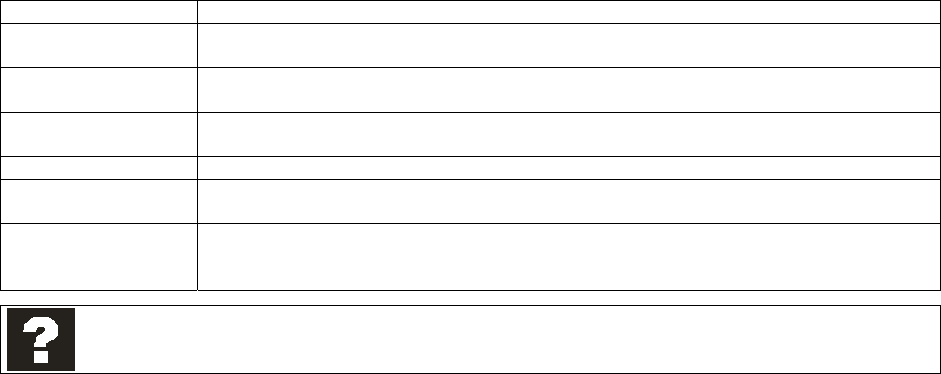
Cyclades-PR4000
Chapter 7 - The E1 and T1 Interfaces, Without Signaling 53
The controller parameters are explained in the table that follows.
Controller Menu CONFIG=>CONTROLLER=>T1/E1
Parameter Description
Frame Mode
T1
:
ESF
(Extended Super Frame, the most common) and
D4
are the options.
E1
:
CRC4
(the most common) and
Non-CRC4
are the options.
Line Code
T1
:
B8ZS
(Bipolar 8 Zero Substitution, the most common) and
AMI
(Alternate Mark
Inversion).
E1
:
HDB3
(High-Density Bipolar) and
AMI
.
Signaling Mode Only appears for the PR4000.
None
for channelized lines without signaling,
otherwise, see chapter 8.
Clock Mode Selects the clock mode:
Master
or
Slave
.
Line Build Out Applies only to T1. Sets the attenuation on the TX line. The T1 service provider
should supply this parameter.
Receiver Sensitivity
Short haul
is usually used.
Long haul
is necessary if attenuation prevents reception of
data, usually when the router is installed more than 2000 feet from the cable
termination.
For the CCS Signaling Mode (ISDN-PRI) and the CAS Signaling Mode, read chapter 8
INSTEAD
of
this chapter.
The T1/E1 interface can be broken up into channels, defined by timeslots. Each timeslot is a slice of time allotted
to throughput from a particular source. The configuration can be done in three ways:
1 Full T1/E1: Only one channel group is defined and no others are allowed. All timeslots are allocated
automatically to this channel.
2 Fractional T1/E1: Only one channel group is defined. One or more timeslots are allocated to this channel.
The number of timeslots can be increased at a later time.
3 Channelized T1/E1: Many channels are defined, with one or more timeslots allocated to each channel.


















